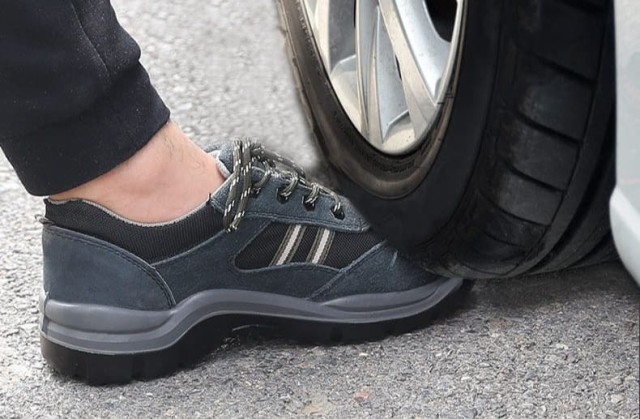For workers balancing safety demands with physical comfort, composite toe boots present a compelling alternative to traditional steel toes. These innovative safety shoes deliver certified protection while addressing the fatigue caused by heavy footwear—but do they truly match steel's protective capabilities? Let's examine the evidence.
Composite Toe Technology Explained
Material Composition and Impact Resistance
Composite toes utilize advanced materials like carbon fiber, Kevlar, and fiberglass to create protective barriers without metal. Research shows these non-metallic composites achieve comparable compression resistance to steel—withstanding forces up to 2,500 pounds—while being inherently non-conductive. Their secret lies in layered polymer structures that distribute impact energy across the toe box.
Certifications: ASTM F2413 and Beyond
All compliant composite toe boots carry the ASTM F2413 "C" rating, verifying they meet identical compression standards as steel toes. Additional markings like "EH" (Electrical Hazard) confirm insulation against live circuits—a critical advantage for electricians. Unlike steel, composites won't trigger metal detectors or conduct extreme temperatures, making them versatile across industries.
Weight vs. Protection: Breaking the Myth
Comparative Data: Composite vs. Steel Toe Weights
Industry testing reveals composite toes are typically 30-50% lighter than steel equivalents. For a standard work boot, this translates to 1.5-2.5 pounds saved per pair—equivalent to removing two hammers from your feet during a 10-hour shift.
How Reduced Weight Enhances Workplace Safety
- Fatigue Reduction: Workers report 27% less leg strain when switching to composite toes (based on ergonomic studies)
- Improved Mobility: Lighter footwear enables natural gait patterns, reducing trip hazards
- Long-Term Health Benefits: Decreased joint stress lowers risks of chronic conditions like plantar fasciitis
Use Cases and Industry Applications
Ideal Scenarios for Composite Toes
- Electrical Work: Non-conductive materials prevent current flow—essential for EH-rated environments
- Airport Security: Metal-free construction avoids scanner alarms
- Temperature-Sensitive Jobs: No thermal conductivity protects against extreme heat/cold
Worker Testimonials: Real-World Impact
"After switching to composite toes, my back pain decreased noticeably by week two. The weight difference feels like upgrading from work boots to sneakers—without sacrificing protection." — Warehouse foreman, 8-year steel toe user
Experience the 3515 Difference
For distributors and bulk buyers seeking safety footwear that workers actually want to wear, 3515's composite toe line merges certified protection with ergonomic design. Our manufacturing expertise ensures every pair meets rigorous standards while addressing the physical strain concerns of modern labor forces.
Ready to equip your workforce with lighter, safer footwear? Contact 3515 today to discuss volume solutions tailored to your industry's unique demands.
Related Products
- Customizable Anti-Smash Safety Boots for Wholesale & Private Label Manufacturing
- Wholesale Leather Safety Boots with Customizable Protective Toe
- Wholesale Durable Safety Boots Manufacturer Customizable Steel Toe Work Boots
- Wholesale Customizable Safety Boots Durable & Protective Footwear Manufacturing
- Wholesale Slip-On Safety Boots Manufacturer - Custom Puncture-Proof & Steel Toe
Related Articles
- How Steel Toe Shoes Meet Safety Standards and Prevent Workplace Injuries
- Steel-Toe Boot Safety: Separating Fact from Fiction
- Steel Toe Work Boots: Balancing Safety and Comfort for Demanding Jobs
- Steel-Toe vs. Composite-Toe Boots: How to Choose the Right Safety Footwear for Your Job
- How to Choose Steel-Toe Boots: Matching Safety Standards to Your Job Demands




















